Tuesday night’s NBA draft lottery, in which the Detroit Pistons dropped four spots, from No. 1 to No. 5, made history, of a sort. The Pistons’ fall — achieved despite 14% odds at the top pick and a 52.1% chance of staying in the top four — was the largest by a team with the league’s worst record since the NBA adopted a weighted lottery in 1990.
To be fair, the Pistons were able to drop four spots only because the NBA revised the lottery in 2019 to fill the top four spots by drawing; from 1990-2018, the No. 1 team could only drop a maximum of three spots. And, in that misery-loves-company spirit, the Pistons have some compatriots in lottery fails: Six teams since 1990 have suffered the maximum drop in the lottery.
So the Pistons are in trouble, right? Well, not quite: Of those six previous teams, four — that’s 66.7%, in case you’re not tired of percentages after a month of hearing the lottery odds — arguably ended up with a better player than the No. 1 overall pick that season. (Though in one case, the difference between Nos. 1 and 4 was pretty slight.)
Let’s take a look back at all six squads and their drafts:
SHAWN WINDSOR: Detroit Pistons don’t need Victor Wembanyama. They need health, draft luck, the right coach.
BEHIND THE SCENES: Even 3 extra draws could not save a devastating NBA draft lottery for the Detroit Pistons
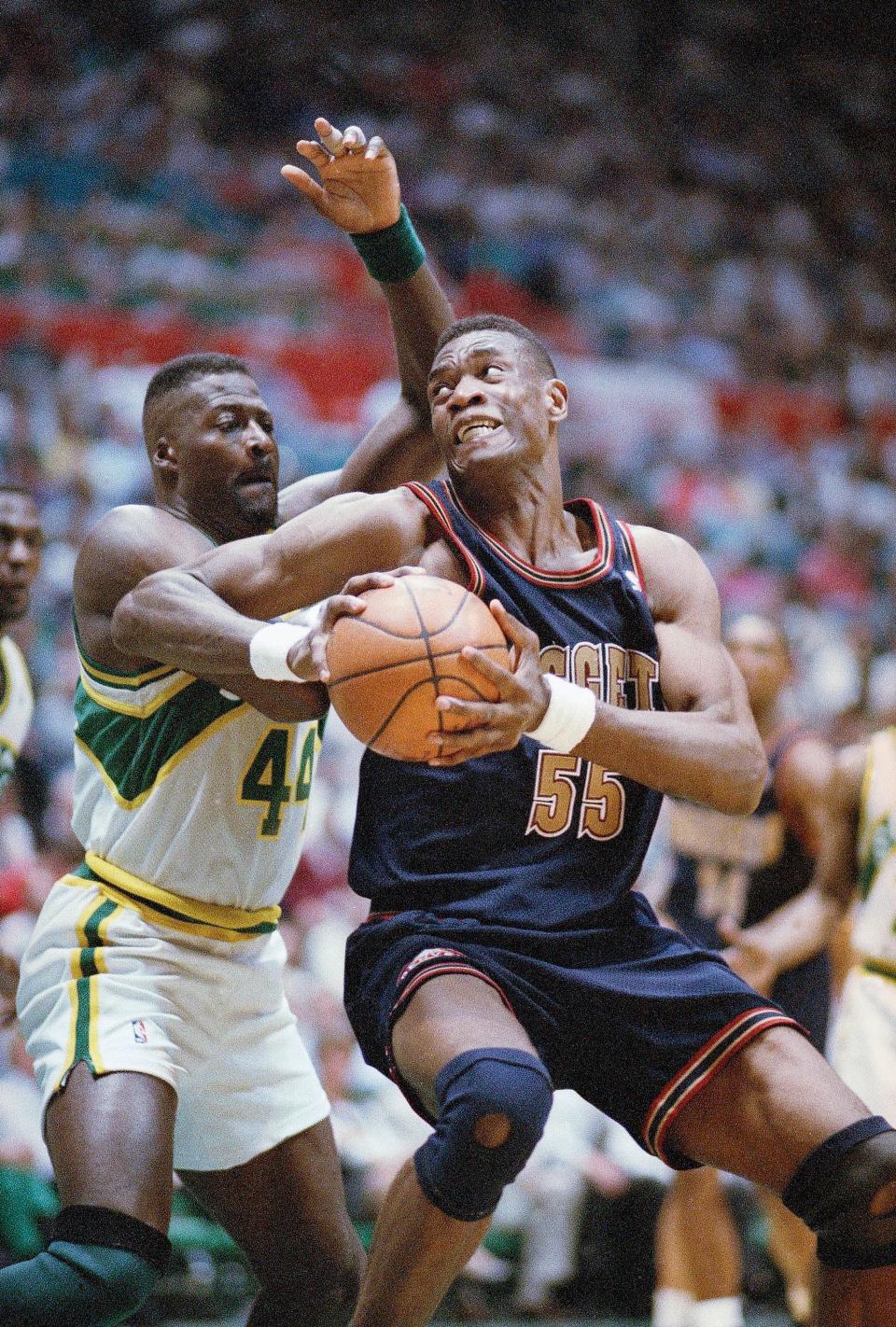
It took just two years of the NBA’s new weighted system — the first four years of the lottery saw all non-playoff teams get an equal shot at the No. 1 pick — for the cellar-dweller not to get picked. The Nuggets’ 20-62 record was four games worse than the second-worst team — but both were knocked out of the top three by the Charlotte Hornets (who had a 10.61% chance at No. 1 and moved up from fifth), the New Jersey Nets (from fourth) and the Sacramento Kings (who stayed put in third).
But Denver would wind up with the last laugh; After UNLV’s Larry Johnson, Georgia Tech’s Kenny Anderson and Syracuse’s Billy Owens went 1-2-3, the Nuggets selected Georgetown center Dikembe Mutombo. All he did was win four Defensive Player of the Year awards, make eight All-Star squads and three All-NBA teams and get six All-Defense nods in a Hall of Fame career. (The top three picks combined for three All-Star teams, though that’s not counting Johnson’s alter ego, “Grandmama.”)
This was perhaps the wildest draft lottery in the event’s history, with 41-41 Orlando jumping from the 11th position — with just one ping pong ball combo among the 66 — jumping all the way to No. 1, followed by No. 7 Philadelphia (10.61% odds) hitting at No. 2 and No. 5 Golden State (7.58%) snagging the No. 3 picks. And it was definitely a top-loaded draft, with Michigan’s Chris Webber, BYU’s Shawn Bradley and Memphis’ Penny Hardaway going 1-2-3 — Webber made five All-Star squads and had five top-10 MVP finishes over 15 seasons en route. to the Hall of Fame; Hardaway had four and two, respectively, plus a long run of “Lil’ Penny” commercials; and the 7-foot-6 Bradley was very, very tall.
The Mavs, meanwhile, wound up with Kentucky’s Jamal Mashburn, who averaged 19.1 points, 5.4 rebounds and four assists a game over an 11-year career, but made just one All-Star team and one All-NBA squad (both in 2002- 03, as a Hornet, rather than as a Mav). (The most productive player in the draft class, by the way, was Houston’s No. 24 overall pick: Sam Cassell, whose 87.5 Win Shares over 15 seasons just edges out Webber’s 84.7.)
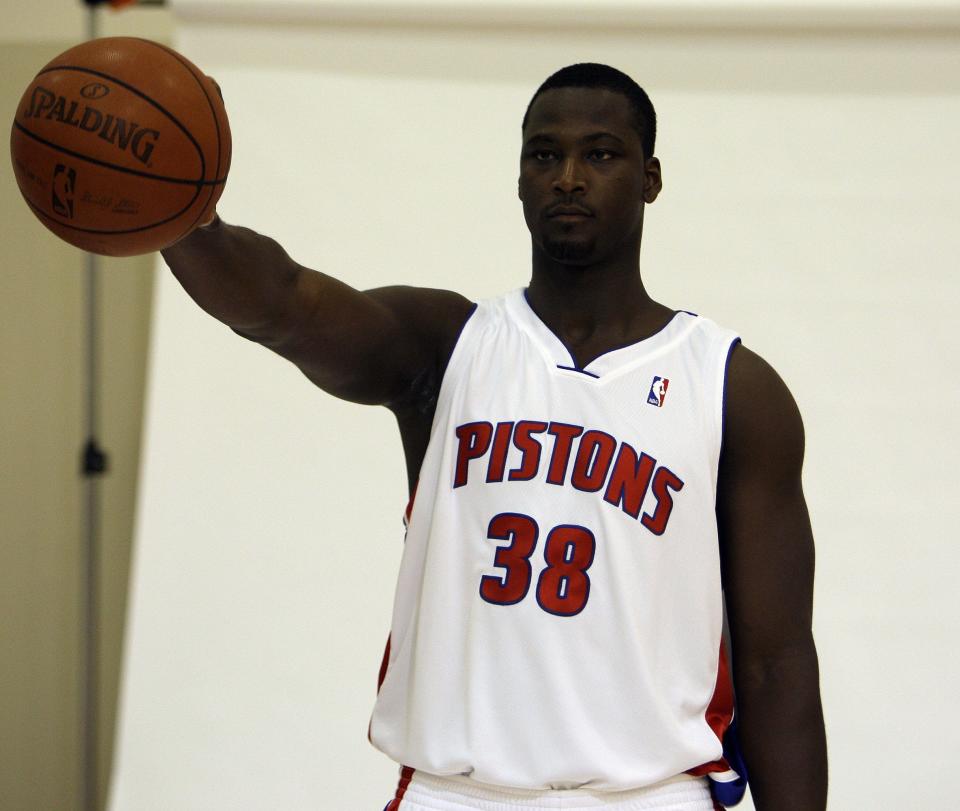
The 15-67 Bulls had a whopping 25% chance at No. 1, but still fell to No. 4 when the Washington Wizards (15.7%) jumped from third to first, the LA Clippers (2.9%) soared from eighth to second and the Atlanta Hawks (8.9%) went from fifth to third. This draft, however, was hardly an all-timer: Of the eight future All-Stars selected, only two — Tyson Chandler, at No. 2, and Pau Gasol, at No. 3 — were lottery picks. Notably, that leaves out prep center Kwame Brown, the Wizards’ pick at No. 1; he lasted 12 seasons (including two with the Pistons, from 2008-10) while averaging just 6.6 points, 3.7 rebounds and 0.6 blocks in 607 NBA games.
It also leaves out the Bulls’ pick, prep center Eddy Curry (from South Holland, Illinois, about 25 miles south of Chicago). Curry eventually developed into a serviceable center, including his age-24 season in which he averaged 19.5 points and seven rebounds a game for the New York Knicks. In all, Curry finished with career averages of 12.9 points and 5.2 rebounds — better than Brown, but not likely what the Bulls envisioned entering lottery night. (Gasol, who was traded on draft night to the then-Vancouver Grizzlies, had the most productive career, with 144.1 Win Shares. That just tops the other first-round Hall of Famer from ’01 — Tony Parker, with 111.3 from the No. 28 slot — and crushes Brown and Curry, at 20.8 and 21.7, respectively.)
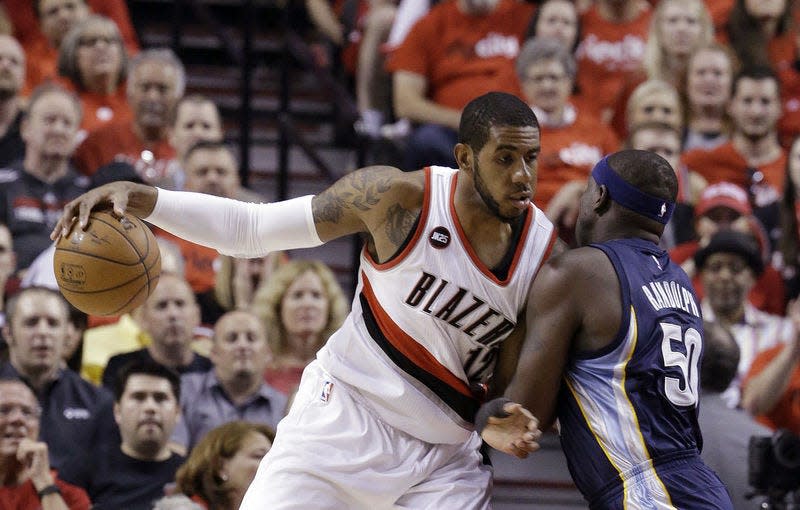
As lottery nights go, this upset was fairly tame: The Toronto Raptors capitalized on an 8.8% chance at No. 1, and the Knicks (with their pick going to the Bulls) and Charlotte Bobcats stayed put at Nos. 2-3, while the 21-61 Blazers dropped to No. 4 despite their 1-in-4 odds of No. 1. The Raptors, the NBA’s lone international team, celebrated their good fortune with an international pick, 20-year-old Italian big Andrea Bargnani. It wasn’t a bad pick in a generally shallow draft — with just five eventual All-Stars — but Bargnani never developed into a star. He averaged 14.3 points and 4.6 rebounds per game over a 10-season career before returning to Europe.
After the Bulls selected Texas’ LaMarcus Aldridge and the Hornets selected Gonzaga’s Adam Morrison, the Blazers turned to LSU forward Tyrus Thomas — then flipped him to Chicago (with Viktor Khryapa) for Aldridge and a 2007 second-rounder. That … was a good decision: Aldridge made seven All-Star squads — including four over his nine seasons in Portland — and made five All-NBA teams while finishing in the top 10 in MVP voting three times (albeit only once as a Blazer, in his final season with the franchise). Aldridge was easily the most productive player in the draft and played all the way through the 2021-22 season. Thomas, meanwhile, averaged 7.7 points and 4.8 rebounds a game over eight seasons.
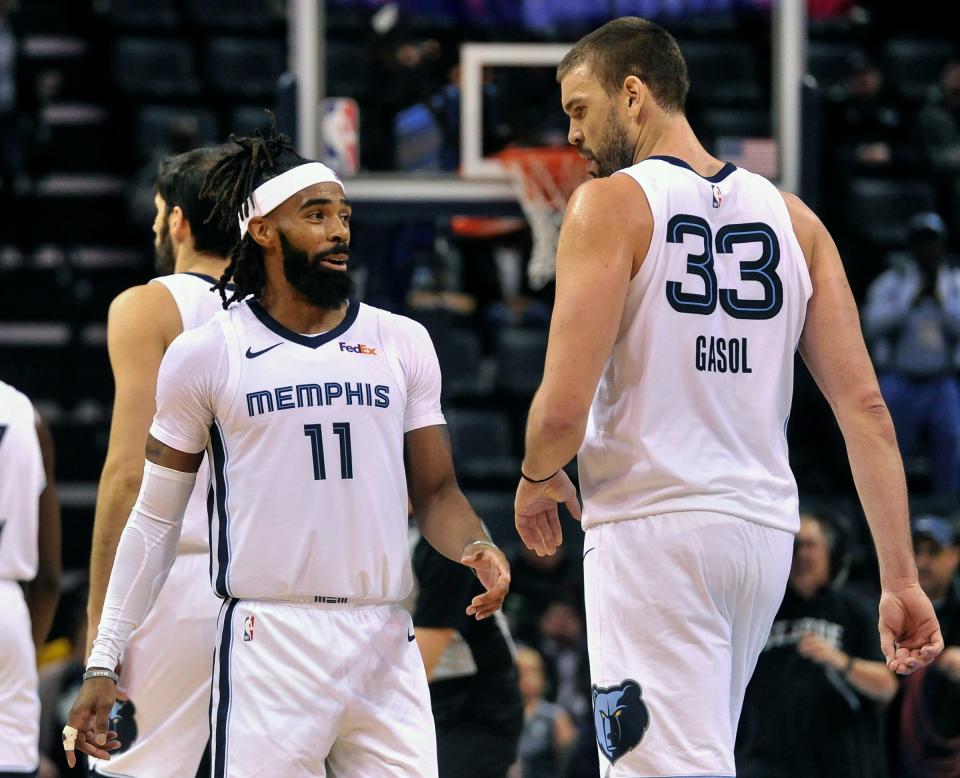
2007: Memphis Grizzlies
Another wild lottery saw all of the top three squads — the Grizzlies (25%), the Boston Celtics (19.9%) and the Milwaukee Bucks (15.6%) — snubbed in favor of the Blazers (5.3% from No. 7), the Seattle SuperSonics (8.8% from No. 5 in their next-to-last draft before moving to Oklahoma City) and the Hawks (11.9% from No. 4). The Blazers’ debated for the next month: Ohio State star Greg Oden or lanky Texas forward Kevin Durant. Portland — in a move evoking memories of their choice of Sam Bowie over Michael Jordan in 1983 — went with Oden at No. 1, leaving Durant to the Sonics at No. 2. (The Hawks had to settle for Florida’s Al Horford, a prep star at Grand Ledge in Michigan, at No. 3.)
Oden lasted just three seasons, while the next four picks are all still active in the NBA (including No. 5 pick Jeff Green, despite heart issues). The Grizzlies went with Ohio State’s other star, point guard Mike Conley; he has just one All-Star nod — in 2020-21, while playing for the Utah Jazz — but he sparked a rebuild that saw the Grizz make the playoffs in seven straight seasons. (Memphis’ trade of Conley to Utah may have been even more important, garnering several key pieces that led to the first back-to-back division titles in franchise history the past two seasons.)
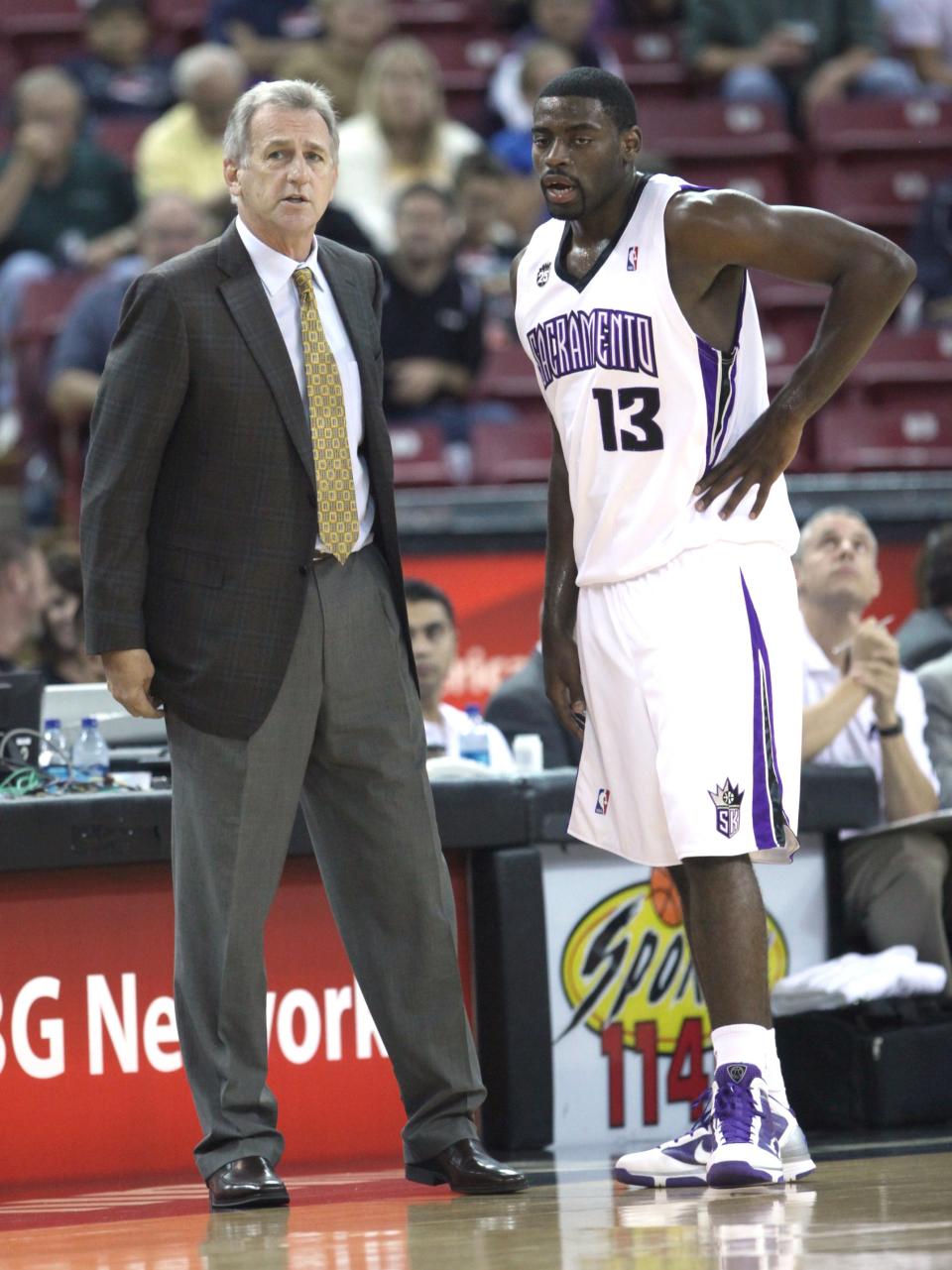
2009: Sacramento Kings
Oklahoma’s Blake Griffin was the clear prize in the lottery, so, of course, he ended up in a major media market — Los Angeles — rather than in Sacramento (which had a 25% shot) or Washington (17.7%). Then again, the Clippers were hardly a marquee franchise, and they had a 17.7% shot at No. 1 coming from the No. 3 positions. The Grizzlies (7.5%) went from No. 6 to No. 2 and the Thunder, in their first draft from their new Oklahoma home, used their 11.9% odds to go from No. 4 to No. 3. Griffin was every bit as transformational as advertised — once he recovered from a knee injury suffered in the Clips’ final preseason game. The future Piston made the All-Star team in each of his first five full seasons and the Clippers made six straight postseasons with him after making just seven total over the franchise’s first 41 seasons.
After the Grizzlies selected UConn’s Hasheem Thabeet — a bust — at No. 2 and the Thunder took Arizona State’s James Harden — a star — at No. 3, the Kings had their pick from a pair of potential franchise point guards (according to pundits): Davidson’s Stephen Curry or Spanish star Ricky Rubio. They went with … shooting guard Tyreke Evans. The Memphis product was, indeed, the 2009-10 Rookie of the Year after averaging 20.1 points, 5.3 rebounds and 5.8 assists a game. He never again topped 20 points a game in a season and was soon lapped by Curry — who you may remember from Golden State’s four NBA titles, with two MVPs to boot — and Rubio, whose 42.3 Win Shares easily clear Evans’ 28.4.
This article originally appeared on Detroit Free Press: Detroit Pistons could still land 2023 draft star, despite lottery failure